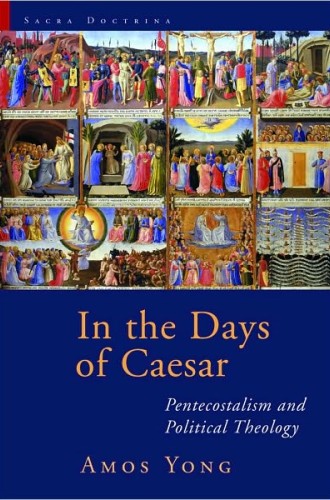In the Days of Caesar, by Amos Yong
In the course of the 20th century, Pentecostalism expanded from a small revival movement to a global presence comparable in its extent and variety to Roman Catholicism or Anglicanism. Yet few people in mainstream U.S. churches know much about it, and what little they do know relates more to Pentecostal practice than to Pentecostal thought.
Non-Pentecostal Christians tend to see Pentecostalism through a sociological rather than a theological lens. Amos Yong is a Pentecostal theologian who aims to change that. With a steady output of works on Christian hospitality, global theology, religion and science, and religion and society, he furthers a dialogue between Pentecostal theology and other schools of thought that is shaped by his broad knowledge of theology and his inclusive vision of his own tradition.
In the Days of Caesar develops a Pentecostal view of Christian life under worldly powers. Yong's interpretation begins in the days of Caesar Augustus, whose rule provided the political context for the narrative of Luke-Acts, in which Pentecostalism finds its origin and bearings. A global religious movement necessarily takes different forms as it finds itself operating under different leadership and in different settings; Pentecostalism is extraordinarily diverse, encompassing Pat Robertson's American conservatism and Juan Sepúlveda's Chilean liberation theology.






